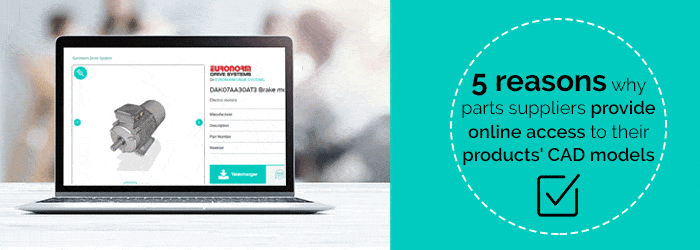In the wake of the COVID-19 crisis,
corporate marketing and communication teams are operating in a fog of
uncertainty. Budgets have been frozen or drastically downsized, trade shows
have been scrapped, and business is struggling to tick over despite signs of a
recovery.
Given this state of affairs, two solutions
are available to marketing professionals. The first involves brainstorming ways
of continuing to communicate about the brand and finding new leads for the
sales teams. The second is simply to resign yourself to your fate and hope that
better days are just around the corner.
Personally, we would rather go for the first solution, and I think you would too, because if you are reading this article, it probably means that you have been looking for low-cost ways of reaching out to your target market. So let’s cut to the chase and take a look together at six types of action that you can roll out with a near zero budget!
1 – Share your expertise across professional groups
Facebook and LinkedIn are giving their
subscribers the option of interacting within theme-based groups. Whether your
company sells industrial parts, CAD software, 3D printing solutions or IT
hardware, you are bound to find the group matching your target market.
If you sign up for these groups, you will
be able to share content with their subscribers, chat with your target
customers and even gain a clearer insight into their needs. The idea is to
cement your reputation as an expert in your field by focusing on dialog instead
of plugging and hyping your products and services at every opportunity.
The best way to use these groups is to check how often members post and whether they regularly receive comments. If the group is inactive, look elsewhere. According to a recent survey by engineering.com, engineers spend nine hours a week reading digital publications to keep abreast of the latest news!
2 – Forge partnerships with theme-based blogs or companies whose activities dovetail with your own line of business
We always have something to offer! An
article, a banner, a press release… set off in search of those sites that talk
about your competitors and strike a partnership.
For example:
- A well-indexed site offers a comparison of the most effective professional 3D printers in the market. Is your company missing from the list? In that case, make contact and organize a visit to your company, complete with a demonstration. Alternatively, you could send out samples of items created with your star printer. Enthusiasts will be so delighted that they will not fail to thank you by writing an article that sings your product’s praises.
- Media sites specializing in the
manufacturing industry are always hungry for content. Send them a press release
or a media kit packed full of information about your new range of products /
solutions and let them do the rest by spreading the word for free.
- Do you share the same target
market as a software vendor who is not a direct competitor? Then come to a
mutually beneficial arrangement. Each of you can publish marketing content
about the other (e-books, banners, etc.) or do some cross-linking.
- Identify blogs that publish
articles about your line of business and interact with them to create backlinks to your site.
Forging a relationship with them is key to reaching out to an audience looking
for information on your areas of expertise, but which have slipped under your
radar.
3 – Upload high value-added content
There is no need to have a blog in order to
upload content. You can write and publish articles on your website without them
being linked to a blog. They will be indexed in the same way.
What really matters is how you are going to
promote the content.
Social networking sites, like LinkedIn, Facebook and Twitter, are definitely an avenue that is worth exploring when looking to reach out, provided that you stick to a schedule.
To promote each article, you are advised to
create a two-month schedule:
- Day 1 – Share your article over Facebook, LinkedIn and Twitter while tweaking your message to suit each network.
- Two hours later – Share again over Twitter after changing your message.
- Next day – Share again over Twitter and retweet the posts of all those who have shared your article.
- Two weeks later – Share again over LinkedIn.
- One month after the initial publication – Share your article again over Facebook, LinkedIn and Twitter.
- Two months after the initial publication – Share over Twitter.
If you are monitoring the web for specific content, such as by using Google Alerts, you can find blogs publishing similar content to yours. Feel free to leave comments that will encourage visitors to read your article: «Thanks for the article. The topic was really interesting. I’ve written a related article that you can find here […]»
4 – Identify and collaborate with influencers
Don’t you think that there are any
influencers in the manufacturing industry? Well there are, I can assure you. We
are light years away from today’s Instagrammers. These are opinion leaders in
their fields!
I recently wrote an article featuring 10
influencers in industry that you should follow. You never know, you might
find just what you were looking for.
Otherwise, I would advise you to use Buzzsumo, an influencer marketing tool
that could help you.
During your search, never forget that you
are going to build a win-win relationship with an influencer. You will benefit
from their audience and their power of recommendation. At the same time, think
about the value proposition that you are going to make to the influencer and
how else you can sweeten the deal.
The idea is to propose something with no strings attached. To break the ice, send out some content by email that is likely to catch their interest. Tag them on the social networks, share some of their content and thank them.
5 – Be an active participant in forums
You might think that this is unrealistic,
but forums are actually flooded with people interested in specific topics. They
are aiming to find answers to what are sometimes specialized questions. This is
where your expertise comes into play!
Finding forums is a real challenge and
requires some painstaking detective work. That is why I would advise you to use
BoardReader, a specialized search engine
for searching results in forums.
This site works in the same way as a conventional search engine, except that it only indexes chatrooms and not other sites. It is ideal for checking out your online reputation, looking for tips and advice, and finding discussions about all sorts of subjects. Forums often contain solutions to problems that specialized sites are unaware of.
6 – Organize webinars
Webinars have recently been all the trend
and rightly so! The COVID pandemic has forced us to change our practices, and
videoconferences have become the norm.
A few technical resources are required to
organize a webinar, but nothing complicated. Such tools as Zoom, GoToWebinar,
Skype, Teams and Google Hangouts offer solutions for creating online webinars.
The most complicated thing is finding a
topic that will interest your audience, and a dynamic presenter to lead your
webinar. Presenters must be intimately familiar with the topic if they are to
answer all the questions.
If you really do not have any idea for the
topic of your webinar, feel free to carry out a survey among your audience.
If you still have questions about webinars,
take a look at one of our recently published articles called «Do webinars
work?»


 English
English Deutsch
Deutsch Français
Français Italiano
Italiano Español
Español Português
Português 中文 (中国)
中文 (中国) 日本語
日本語


 09/01/2019
09/01/2019  SEO, Кампании по электронной почте, Социальные сети
SEO, Кампании по электронной почте, Социальные сети 
